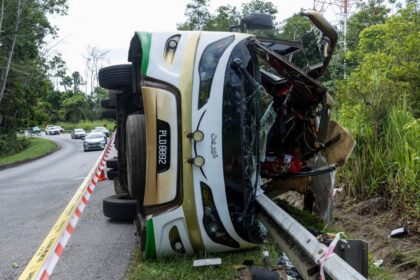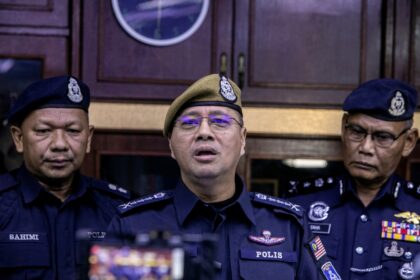CYBERJAYA, June 10 — On the night of Hari Raya Aidiladha, it was reported that the Malaysian Communications and Multimedia Commission (MCMC) had directed telecommunications companies (telcos) to hand over mobile personal data (MPD) to the government.
The directive, which reportedly involves mobile call records from the first quarter of this year, was said to be for official statistical purposes.
But how exactly will the data be used — and is your personal information at risk?
Project MPD
The Department of Statistics Malaysia (DoSM), under the Economy Ministry, proposed the use of MPD as a new data source for producing official national statistics.
The proposal was presented to the Cabinet on April 19, 2023, and subsequently approved.
Speaking at a media briefing today, MCMC deputy managing director Datuk Zulkarnain Mohd Yasin said that MPD has been formally recognised by the United Nations as a key big data source for strengthening official statistics.
He said it offers a powerful tool to improve the quality, timeliness, and granularity of national data.
“The global initiative highlights the pressing need to transcend into traditional statistical methods and adopt innovative data solutions, better comprehend and address societal changes while ensuring that privacy and data protection remain paramount at every stage of implementation now,” he added.
Malaysia is not the first to implement the initiative, as countries like Indonesia and Oman have already done so.
In short, instead of relying on surveys conducted every five years, the government plans to use real-time data from MPD to inform policy-making and planning — rather than basing decisions on outdated figures from the last DoSM survey.
What sort of data that MPD will provide to the government?
During the briefing, the media were informed that the MPD project will only collect eight key parameters.
These include the location of signal towers (longitude and latitude), details on local and international mobile subscriptions, and call logs.
The data will provide the government with more accurate, real-time insights to support planning and policy-making, particularly in areas such as economic activity, population movement, and infrastructure needs.
For example, MPD can highlight areas with high mobile activity, helping authorities plan for better telecommunications coverage and capacity, or even identify previously overlooked population areas that were not part of the initial planning.
Zulkarnain shared a personal experience: “I was stuck in traffic on the highway from Malacca to USJ. My daughter was supposed to have an online meeting with her university team, but she couldn’t connect.
“Once the highway was congested, the mobile signal also became overloaded. This shows how people’s movement affects not just road traffic but also telecom infrastructure.”
For the ICT sector, MPD enables the production of granular statistics — such as the number of active mobile broadband subscriptions and penetration rates — at multiple administrative levels, including state, district, mukim, parliamentary constituency, state legislative assembly, and local authority areas.
In the tourism sector, the system can generate indicators like the number of visitors and domestic tourism trips.
This allows planners to identify popular destinations, particularly among foreign tourists, and improve services and infrastructure in those areas.
“So from the MPD, we can know for example how many people are visiting the Batu Caves on Monday,” Zulkarnain added.
Will your personal data also be shared?
MCMC commissioner Derek John Fernandez reiterated that mobile users’ personal data won’t be shared by their respective telcos to the government.
“There’s only eight parameters that we want for the data. That does not include a person’s identification number, address and others. In fact, we do not want the personal data. In our letter sent to telcos, we told them to ‘anonymised or pseudomised’ the data when submitting it,” he said.
The eight parameters collected are:
- MSISDN – An anonymised subscriber identifier
- Date and time of transmission
- Transmitter longitude
- Transmitter latitude
- Data type – Such as call detail records, indicating whether it’s a regular call or data usage (e.g., WhatsApp)
- Service type – 3G, 4G, or 5G
- MCC (Mobile Country Code) – Identifies the country of origin
- Unique ID
Fernandez clarified that even the location of mobile users will not be shared — only traffic signals from mobile towers will be collected.
There are two ways for telcos to submit MPD data to MCMC:
Option A: Telcos process the data within their own secure environments. Once processing is complete, they submit only anonymised and aggregated outputs, such as the total number of mobile users, to MCMC.
Option B: For telcos without in-house processing capabilities, anonymised data is securely submitted to MCMC for processing.
According to Fernandez, most telcos opt for the first method.
Fernandez assured that MCMC stores all its data on its own premises and does not use cloud services or third-party storage.
When asked why the public was not consulted about the project, Fernandez explained that it is still in its pilot phase.
“We need to complete the pilot test first to get a clearer picture, how effective it is and how it can truly benefit us,” he said.
Cyberjaya has been identified as the first location for the pilot test and will run until 2026.
“This is the new way of survey. The digital way,” Zulkarnain said briefly in a press conference after the briefing.
Source: 
Is your privacy at risk — or is MCMC just tracking trends? What you need to know about Malaysia’s mobile data project































